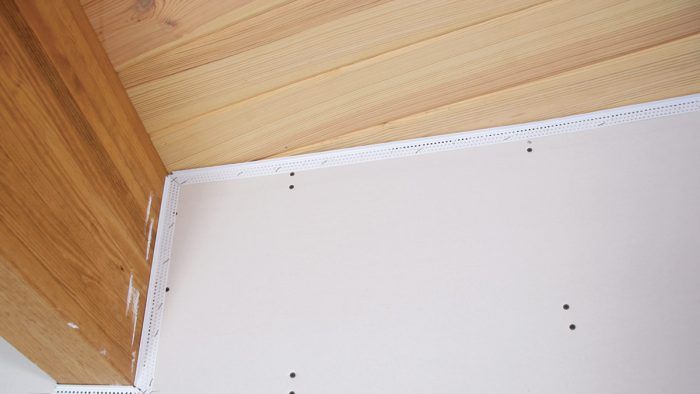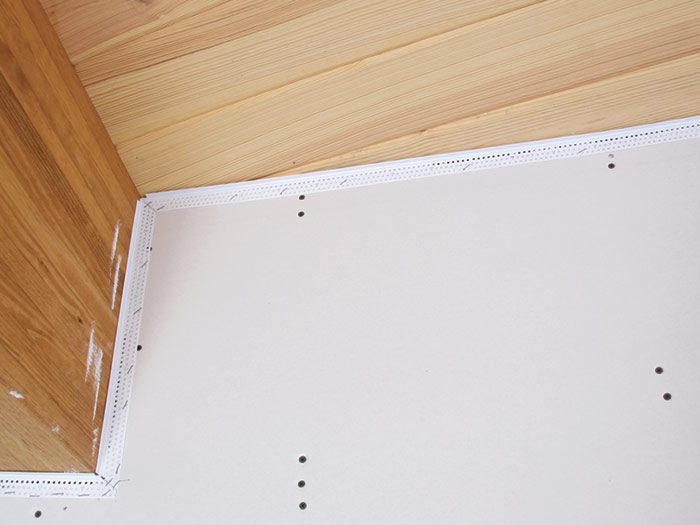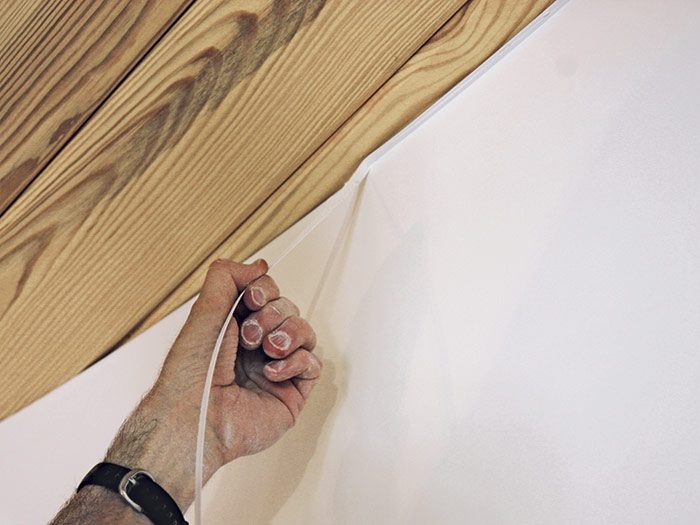Butting Drywall to a Different Surface
Install L-beads to make taping easier, and to minimize the risk of cracking, where drywall abuts another surface.

When drywall is butted up against a tub/shower unit, trim work, or a wooden beam, it can be very time-consuming to fit each panel perfectly and leave no gaps or broken edges. I used to flat-tape up to these surfaces and can get excellent-looking results. But whenever you butt different surfaces, cracking can occur because of different levels of expansion and contraction or because of structural movement. Whenever possible, I use L-beads instead.
Applying L-beads
I prefer to use L-beads between the drywall edge and the abutting surface for a number of reasons. The L-beads provide a tight fit, but also resist the edge cracking that flat-taping is prone to. If the drywall edge is in an area that can get wet—as against a shower—L-bead protects the edge and prevents moisture from wicking into the drywall.
L-beads are installed after the drywall is hung—just leave a slight gap for the edge to slip into. They are covered with compound, unlike most J-beads, so you get a smooth finished look. Some L-beads have a removable edge that protects the abutting surface from compound when coating over the bead.
I like the vinyl L-bead with a tear-away strip that acts as a shield to protect the abutting surface. Before you install the bead, attach the drywall about 1/8 in. short so that you can slip the leg of the bead between the drywall and the abutting surface. Secure the bead in place—the vinyl product I use is simply stapled tight against the drywall surface—and apply two or three coats of compound to hide the bead. After sanding, remove the protective strip to reveal a nice clean surface.
A lot of L-beads are tape-on beads, meaning that compound holds the bead in place. They are available in stick form or in rolls. To protect surfaces from compound use low-stick masking tape. You can also get flat beads with the tear-away strip, which are handy to have when no gap was left and when you are working around a drywall return against an arched window.







